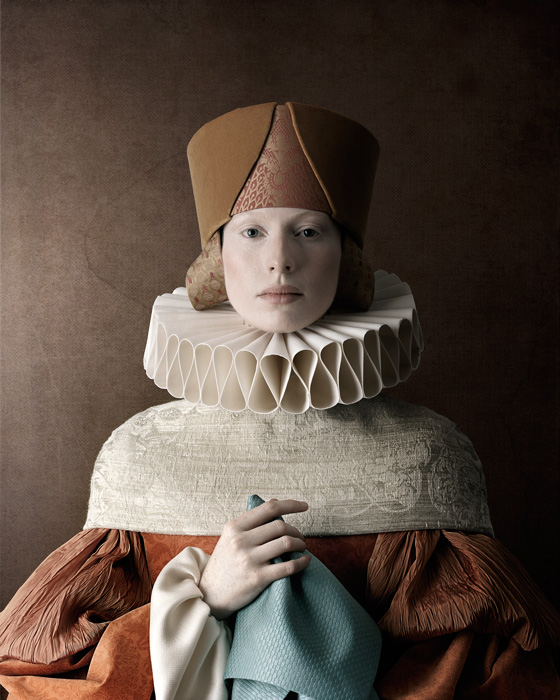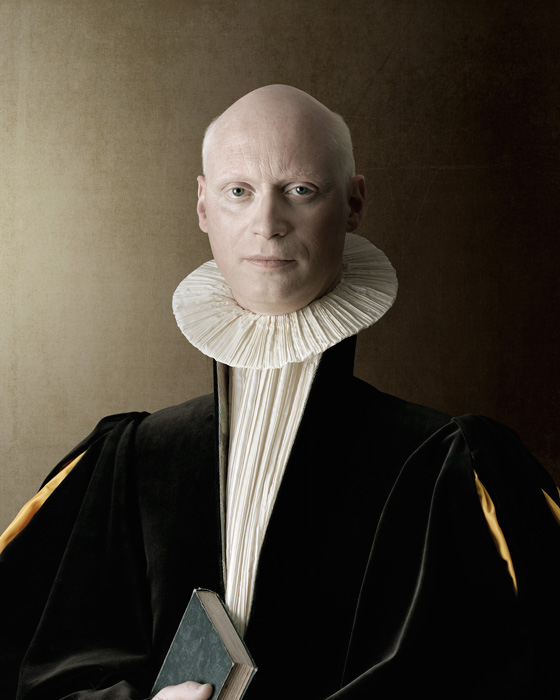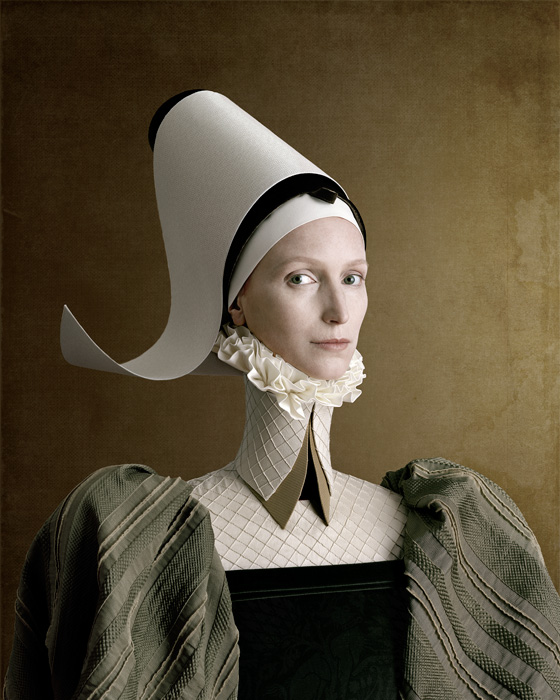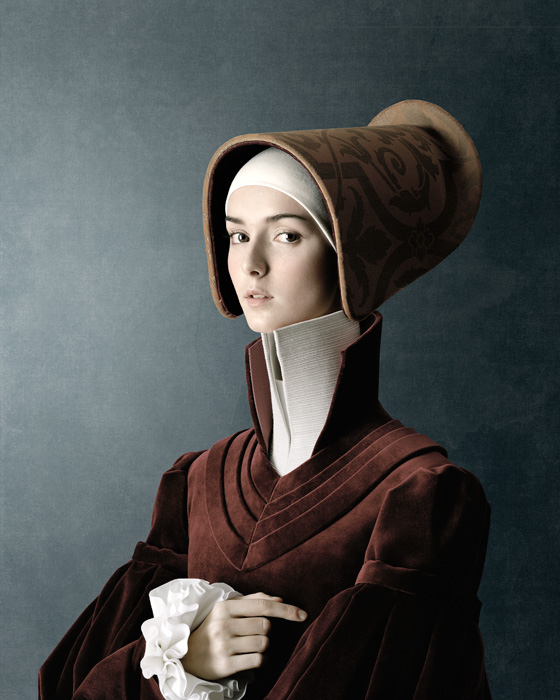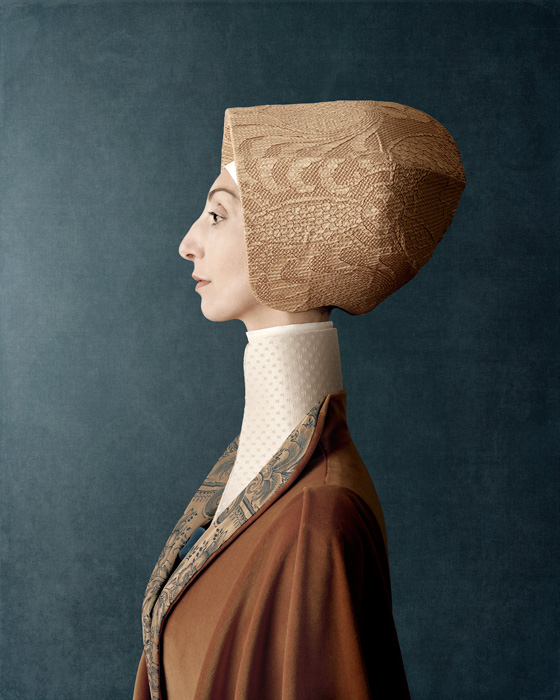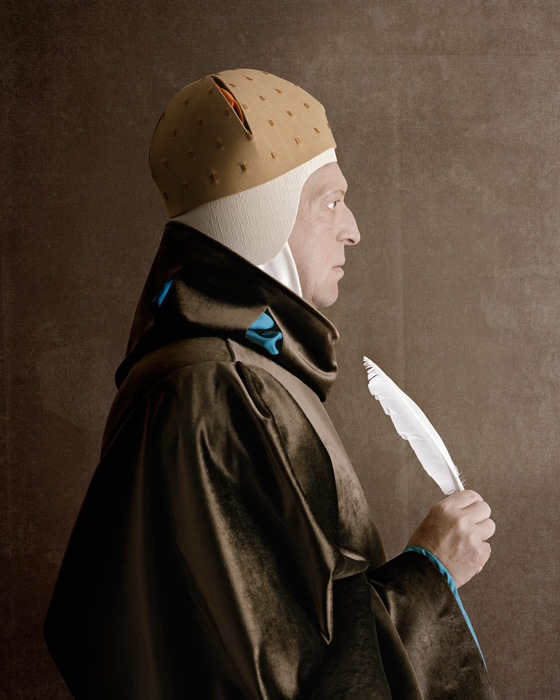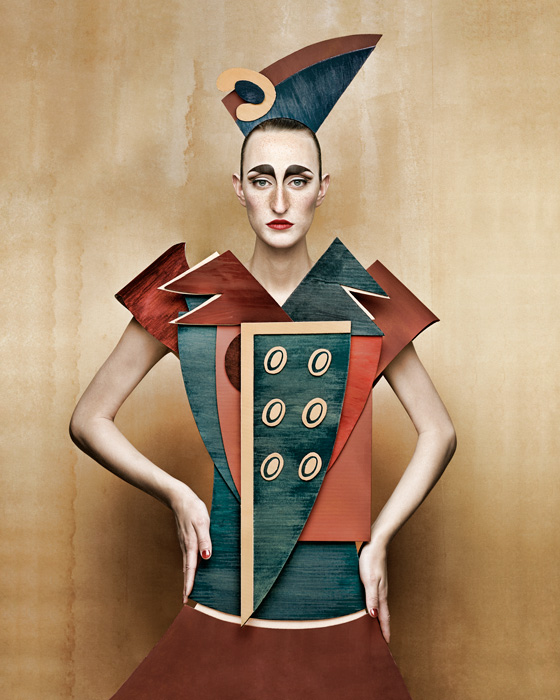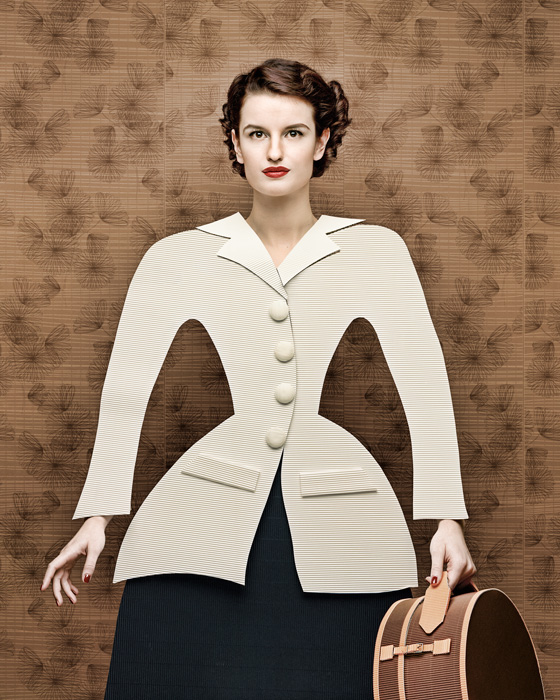By Johanna Mizgala
Portraits are deceptively alluring: we are immediately attracted to admiring the faces of others. As we are drawn under their spell, the images reveal themselves to be carefully crafted manifestations that must be decoded to be fully understood. In this sense, the portrait can be read as a form of advertising – the original branding exercise. Far from merely capturing the physical characteristics of the subject in question, any objects or landmarks included in the composition serve to guide viewers in forming their impression of the individual. Everything inside the frame is meticulously considered, serving as a signpost to point out aspects of personality, place, and position. Likewise, how the subject chooses to dress, or not dress, can be construed as an extension of his or her persona. Just as the tools of the trade behave as an entourage for the starring figure in the portrait, what he or she wears gives an indication of his or her social standing, occupation, style, and taste – if we can believe Mark Twain that clothes truly do make the man, or woman. Any garment thus becomes a costume in the context of the image, as its meaning is fixed within the portrait as a part of the role being played by the subject. Costumes enable us to quite literally put on the emblems of what it is that we desire: to be, to project, to negate, or to confirm. In this way, the portrait subject quite knowingly is acting the part, with the artist as a willing accomplice.
Portrait artists become known for their craft, and their style envelops those who come to sit for them with a particular patina. They recognize themselves within the work of the artist. Yousuf Karsh became so synonymous with his portrait style that his clients referred to the experience of being photographed in his studio as being “Karshed.” In the world of painting, artists throughout history have held a similar sway – evidenced in wanting one of Plamondon’s perfectly ethereal complexions as your own, for instance, or being bewildered by one of Modigliani’s elongated necks. The commissioned portrait in particular bears the traces of the business transaction from which it is created – the sitter wants to look a certain way and be part of a particular crowd, and is willing to pay for the privilege.
Going for a specific look has a history in fashion photography as well; designers want to work with artists who will render their clothing in a manner that encapsulates desire. In this context, who or what is the actual subject of the image is deliberately fluid. Models play a curious role for the artist: they must simultaneously radiate a commanding presence while being able to fade into the backdrop as the armature for the clothing that the designer ultimately wishes to advertise. They are present and absent all at once; even when celebrities are featured in fashion photography, they exist in this curious never-land of recognition and transformation. They shimmer between the familiar and the strange: an embodiment of double negative.
Christian Tagliavini (b. 1971) describes himself as a “craftsman of photography.” He acknowledges that the creations his models put on are the stuff of fantasy and not anything that someone might really wear. Every aspect of the photograph, from the intricate costume to the casting of the model, bears an affinity to a stage production or a film, with Tagliavini taking on every role behind the scenes, from costume-maker to cinematographer, producer, and director. The pictures in his portrait series Dame di Cartone (2008) resemble fashion sketches come to life – as though the exaggerated, brush-stroked drawings that serve to translate a designer’s idea of a garment are here being seen on Tagliavini’s models, as opposed to finished pieces of clothing that one would see on the runway or in print. The images are grown-up versions of paper dolls – Dame di Cartone translates as Cardboard Ladies – drawing inspiration from the baroque, from cubism and even from Christian Dior’s New Look: Tagliavini samples fashion like a DJ samples beats. His large-scale photographs are a jarring juxtaposition of the three-dimensionality of the models’ faces, necks, and arms with the extreme flatness of their elaborately crafted cardboard finery. The photographs call to mind both illustrations from children’s books and the costumes created by Sonia Delaunay for the Ballets Russes. They have a fairytale quality, as though Tagliavini has captured Pinocchio caught in the middle of his transformation from wooden puppet to real boy.
For his series 1503 (2010), Tagliavini employs both cloth and cardboard to make the garments worn by his subjects, creating contemporary echoes of the portraits commissioned by the Medici family from Mannerist painter and poet Agnolo di Cosimo Bronzino (1503–72). Taking the title for this series from the year of the painter’s birth, Tagliavini presents the viewer with photographs of what could be Bronzino’s wealthy clientele. Unlike their cardboard cousins the Dame di Cartone, with individual titles that reference only to a genre or a particular era, the portraits in 1503 allude to Bronzino’s work and to his Medici patrons, with titles such as Ritratto di signora in verde (Portrait of a Woman in Green) and Lucrezia.
In his lifetime, Bronzino was sought after for a style of portraiture that epitomized the detached elegance and lavishness of Florentine nobility. His paintings are a striking combination of emotionless faces in opulent garments that seem almost impossible to imagine in the flesh. Tagliavini takes this expressive impassivity one step further – creating garments that are completely unwearable yet nonetheless attire his otherworldly subjects, who stare haughtily out at the viewer or seem lost in their own reverie. They exist as objects of contemplation, and they give the impression that they firmly understand the role they have been chosen to play. These images challenge the very notion of looking at a portrait, as if both the image and the action that it invites were caught in their own reflection. The photographs serve as a spiral in which the viewer is conscious of the cycle of representation, forever dissolving in on itself. Although at first Tagliavini’s works can be read as photographic quotes of Bronzino’s era, the central context of these photographs is the act of looking: at the subjects whom he has cast for the portraits, at their costumed finery, which bear the traces of the artist, and ultimately at the viewer for whom this spectacle was created. They are works of conspicuous consumption. The portraits look out from a scene that itself is a scene. They are real behaving as make-believe, and we are invited to play along.
In Tagliavini’s photographs, fantasy is front and centre alongside reality. By necessity, the scenes are predicated on the fact that there is no implied “end state;” just like fashion, they exist in a perpetual state of transformation. What is familiar becomes unrecognizable and then comes back into style. In this manner, his images can be construed as freeze-frames of a series of repeated acts. They are very definitely poses, and those who adopt them understand their significance. His portraits are thus understood as personifications of modes of behaviour and dress, visual cues for the attitudes that both impede and perform the body but that cannot encompass it completely. Persona is not fixed, but layered and capable of discarding attributes and acquiring others. This is an acknowledgment of what limits the body and what is taken up by the body at the same time. Tagliavini’s subjects aspire to resisting fixed representation, while at the same time being willing to try it on for size.
Born in 1971, Christian Tagliavini grew up in Italy and Switzerland. He studied graphic design, and then worked as an architect and graphic artist before he focused on art photography in 2000. His work has been included in several group exhibitions in Switzerland and other countries, and has been published in international magazines such as Eyemazing and The British Journal of Photography. He lives and works in Lugano, Switzerland, and is represented by Camerawork Gallery, in Berlin, and Cons Arc Galleria,in Chiasso, Switzerland. www.christiantagliavini.com
Johanna Mizgala is a freelance curator, critic, and educator. Her doctoral dissertation addresses the subject’s sense of humour in early photographic portraits, the collaborative nature of the portrait sitting, and how free-spirited examples of transgression question issues of race, class, and gender.

